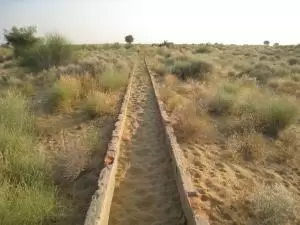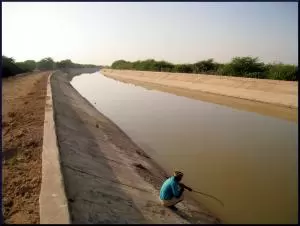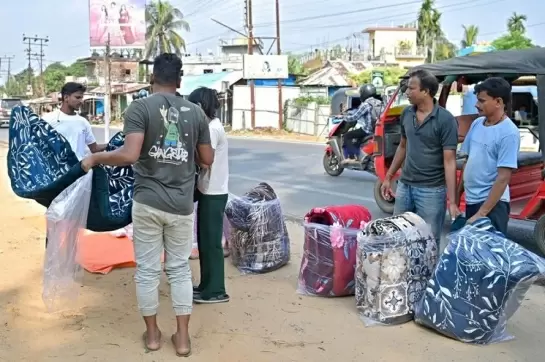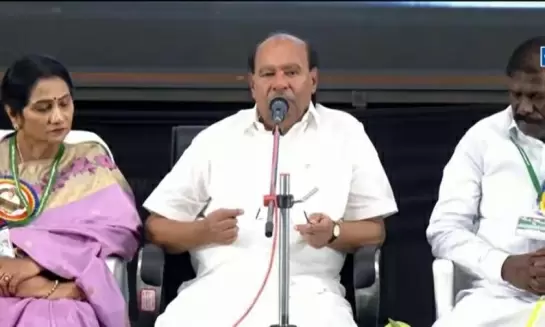Water from Punjab to Rajasthan has washed away the hopes of people of Thar

17-August-2012
Vol 3 | Issue 33
Chattar Singh of Ramgarh village had never heard of a mosquito till the time he went to Jaipur to appear in a school examination. When the village elders asked him how he plans to tackle the blood thirsty insects, he said, “Let them come, I will have my stick ready.”
Maturer by 35 years now, Singh narrates this tale to point out that the Thar desert of Rajasthan, just like any other desert area of this world, never had mosquitoes. Things changed with the extension of ambitious Indira Gandhi Nahar Pariyojana (IGNP) to the area in its second stage, completed by mid 1990s.
 |
|
The channels carry sand instead of water to the fields (Photos: GOI Monitor)
|
Instead of the promised cultivated area, crop yields and safe drinking water, the canal brought in swarms of mosquitoes and hordes of pigs. Thar was hit by its first major malaria epidemic in 1990 recording 48 deaths which was followed by a bigger disaster in 1994 with double the calamities.
Stagnant water and seepage from the canal due to faulty design causes massive water logging thus breeding mosquitoes.
In 2003, there was a resurgence of malaria despite the failure of rain and extreme drought situation. In 2010, while the whole of Rajasthan registered a comparatively low malaria, districts of Jaisalmer and Barmer saw an uptrend in the disease with a net total of 1,464 cases in just first eight months of the year.
This year also, health officials had recorded at least 100 cases of malaria in Jaisalmer district in the month of May, which is the driest time in Thar. "Rainfall or no rainfall, we get malaria cases almost every year thanks to the canal,” Chattar Singh confirms.
Carrying waters from the river valleys of Punjab to the sand dunes of Rajasthan, IGNP's intrinsic network of canals, tributaries and minors can be called one of man's most absurd attempt to tame nature; in this case, a centuries-old desert.
The genesis of IGNP can be traced back to the Indus Water Treaty between India and Pakistan which awarded the waters of Ravi, Beas, and Sutlej to India. From India’s (annual) share of water, Rajasthan got 8.60 million acre–feet (MAF) of which the state government decided to utilise 7.59 MAF through the construction of the Indira Gandhi Canal.
Within Rajasthan, the canal is 445 km long covering seven districts. While IGNP Stage I, restricted to Sriganganagar, Churu, Bikaner and Hanumangarh, did bring in prosperity to the area in mid 1970s, Stage II spanning Jaisalmer and Barmer is a far cry from the earlier achievements.
According to official figures, the command area of Phase II of the Indira Gandhi Canal in Jaisalmer covers 4.63 lakh hectares and the canals themselves measure upwards of 3,400 km.
However, a visit to the area offers a direct contrast. At the head of Tanot distributary, which originates from Sagarmal Gopa branch of the canal near Ramgarh, you tend to marvel at the displayed figures: “The water gushes out at the speed of 3.10 feet per second and irrigates an area of 96,693 acre west of the branch.”
The neighbouring patches of green fields add to the illusion but travel towards the Longowal road and greenery will soon give way to sand dunes. The long bricked channels, meant to hold water, dry out.
Filled with sand at many places, broken at others, these brick and mortar structures run over several kilometres looking out of place in the dry land punctuated by phog, aak and other hardy desert grasses.
“Only the land within 2 km of the Sagarmal Gopa branch is being cultivated by farmers. For others, there is neither enough water nor the appropriately-designed network to irrigate the crops,” explains Chattar Singh.
 |
|
Only the land within 2 km of the Sagarmal Gopa branch is being cultivated
|
Shailendra Kumar Mandal of the National Institute of Technology, Patna, who studied the project, writes in his paper: “People in some quarters raised serious doubts about the suit-ability of the semi-arid lands, termed “fragile lands,” for intensive agriculture and challenged the use of irrigation on these lands, on the grounds that the light sandy soils of the desert may be unsuitable for irrigated farming or for any type of intensive cultivation.”
However, these objections were overruled by the state government claiming that improvement in the vegetation cover and the extension of afforestation with the help of irrigated water would stabilise sand dunes and halt the process of desertification. No point in guessing that nothing of the dream world has materialised.
The scenario in IGNP Stage II also puts a question mark on the authenticity of state government's effort to involve communities in management of irrigation systems.
The Rajasthan Farmers’ Participation in Management of Irrigation Systems Act 2000 envisaged Nahari Kshetra Vikas Evam Prabandhan Samitis as elected local bodies for formulation and implementation of policies related to land, water and livelihood issues of settlers.
The samitis still exist, but they have no role in management of resources thus turning the whole exercise into a farce.
By arrangement with GOI Monitor















